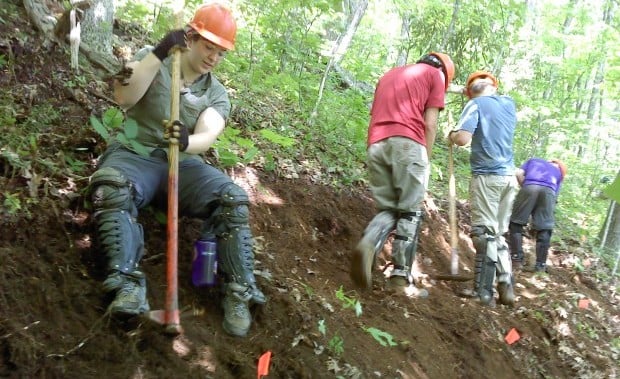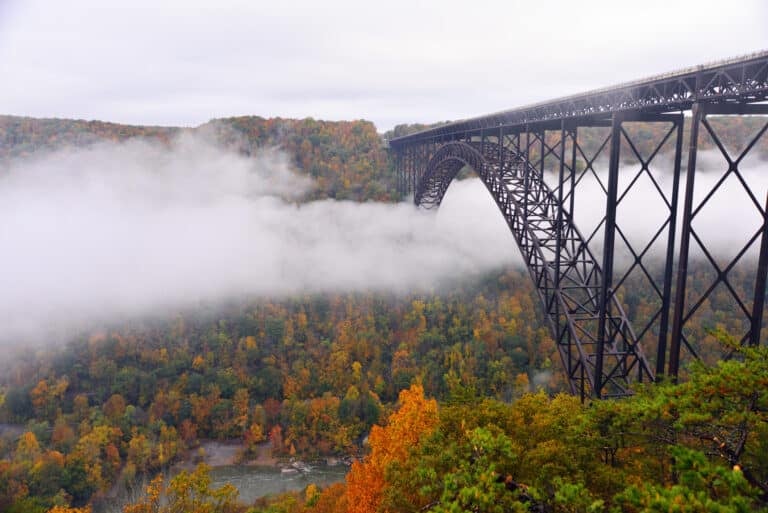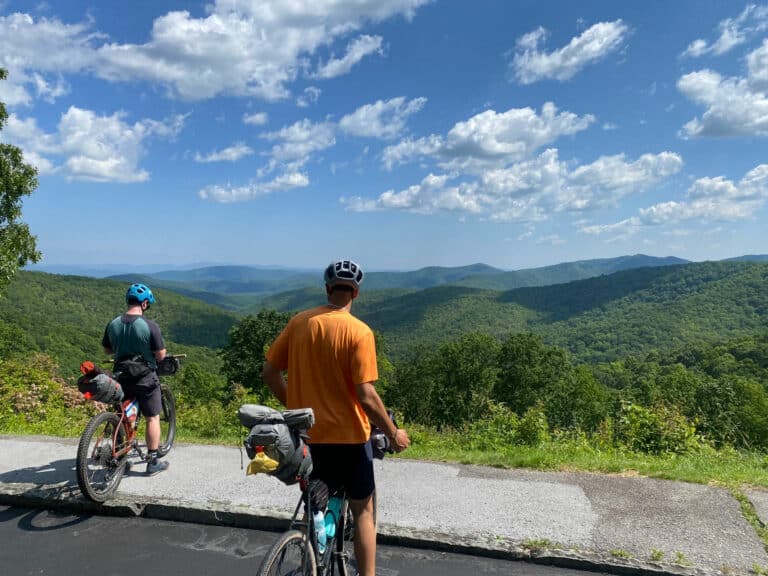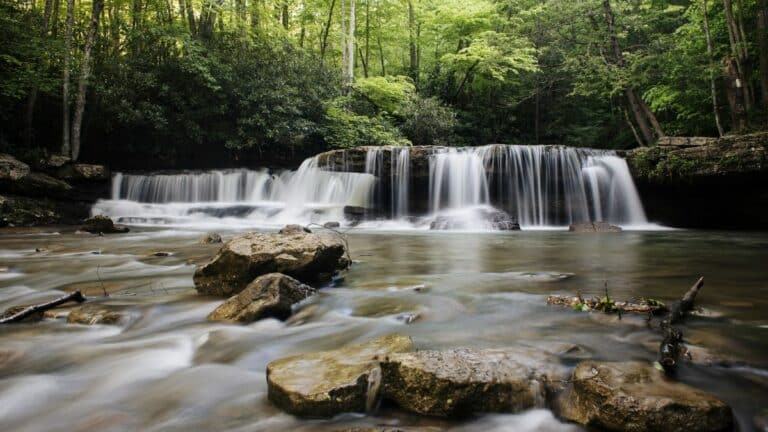The evening is dedicated to backpack preparedness led by Mateo and a good night’s sleep, courtesy of a fairly busy day.
Driving to the Appalachian Trail head, Wednesday morning, is a fun road trip in the A.T.C.’s passenger van, driven by Jameson. He quickly earned the group’s respect. He recently through-hiked all 2,175 miles of the A.T., from Georgia to Maine in about five months, not an easy feat for anyone.
We road trip into the Pisgah National Forest and take in its breath taking window view, knowing that we camp there shortly. We arrive at the trail head and hike to our first work location and discuss trail assessment, maintenance, repair and reconstruction. We then continue our Leave-No-Trace discussion while completing some basic trail work tasks.
Aaron Sanford talks about his enjoyment, so far, of the trip, as we unload backpacks and trail maintenance tools from the van. “You know what, it all happened so fast that I didn’t have a lot of time to think about it. I had never been to the Appalachian Mountains and I expected another adventure and it’s definitely been that. The best thing is the people so far, for sure”, he explains. Sanford compares this conference to another training out west he attended and affirms his admiration for this one and the friends he has already made.
“I love the cross-cut training. I’ve used a cross-cut saw a lot informally and this gives me a chance to actually get written down on a piece of paper that I’m certifed to use these skills that I’ve learned over the last several years. They are actually going to mean something to somebody”, he emphasizes. Samford has done quite a bit cross-cut work in Wyoming and California.
Cross-cut work can be pretty dangerous, as a video displays during cross-cut class training. It is evident that our Wilderness First Aid Training could be useful, just in case something goes down other than a tree!
The primary purpose of the Red Cross Wilderness and Remote First Aid course is to provide individuals a foundation of first aid knowledge and skills to be able to respond to emergencies and give care in areas that do not have immediate emergency medical services (EMS) response, such as wilderness and remote environments. In this course, participants will also develop leadership skills and learn how to prevent, plan for and respond to emergencies.
In his own words, Instructor Jim Holland explains, “Wilderness volunteers are a very, very important group because they are unique in that they work far from any type of medical assistance. Cell phone access is seldom available, as are radios at times, so it’s important that they become self-sufficient. Wilderness First Aid is a step toward that self-sufficiency. It teaches them about the natural hazards. It teaches them about using tools safely and that prevention is one of the most important things you can do.”








